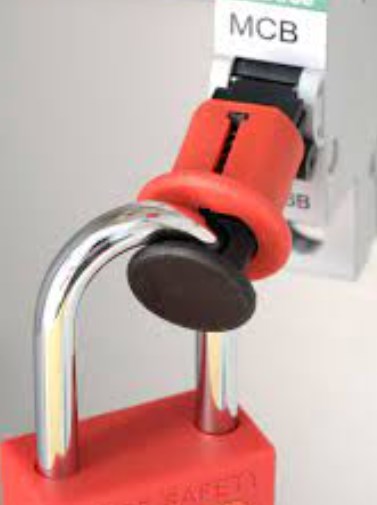Types of Hazardous Energy Lockout/Tagout Protects Against
When people think of energy, they’re most likely thinking about electricity. While electrical energy has the capability of being extremely dangerous, a lockout/tagout procedure aims to prevent injury or death from multiple types of hazardous energy.
Lockout/tagout for electrical energy: When establishing a lockout/tagout procedure for electrical energy, consider all potential sources. Most machines get electrical energy through some type of circuit breaker. A lockout device can be placed on the circuit breaker to prevent electrical energy from flowing to the machine.
Lockout/tagout for mechanical energy: Often overlooked when considering a lockout/tagout program, mechanical energy is created through the motion of an object. If an employee is performing maintenance on a machine and accidentally bumps a moveable part, it could pick up enough momentum and become dangerous. It’s a good idea to put a lockout/tagout device on things like robotic arms, moveable saw blades, crushing parts or anything that can move unexpectedly.
Lockout/tagout for hydraulic energy: Hydraulic energy is very common in manufacturing thanks to its effectiveness with heavy machinery. Lockout/tagout devices should be used with hydraulic equipment to prevent pressurized hydraulic oil from being released while someone is working on the asset. Sometimes hydraulic oil is pressurized with electrical brakes, which will disengage when the power is shut off. Part of the lockout/tagout procedure for hydraulics is checking to ensure energy has been released before work on the machine begins.
Lockout/tagout for pneumatic energy: Similar to hydraulic energy, pneumatic energy is formed using pressurized air instead of fluid. If a machine or piece of equipment uses stored pneumatic energy, part of the lockout/tagout procedure is to release the built-up pressure before maintenance begins.
Lockout/tagout for chemical energy: Chemical reactions can release energy, whether by mixing two or more chemicals together, altering a chemical’s temperature, or a sudden change in pressure, among other factors. Burning gasoline in an internal combustion engine is one of the most common types of chemical energy. Lockout/tagout procedures for chemical energy might involve removing and locking out a diesel generator that serves as a backup power source.
Lockout/tagout for thermal energy: Thanks to modern machinery, thermal energy is rarely encountered today, but it’s a good idea to be aware of it. Thermal energy is energy gained from a heat source.

Post time: Jun-22-2022






